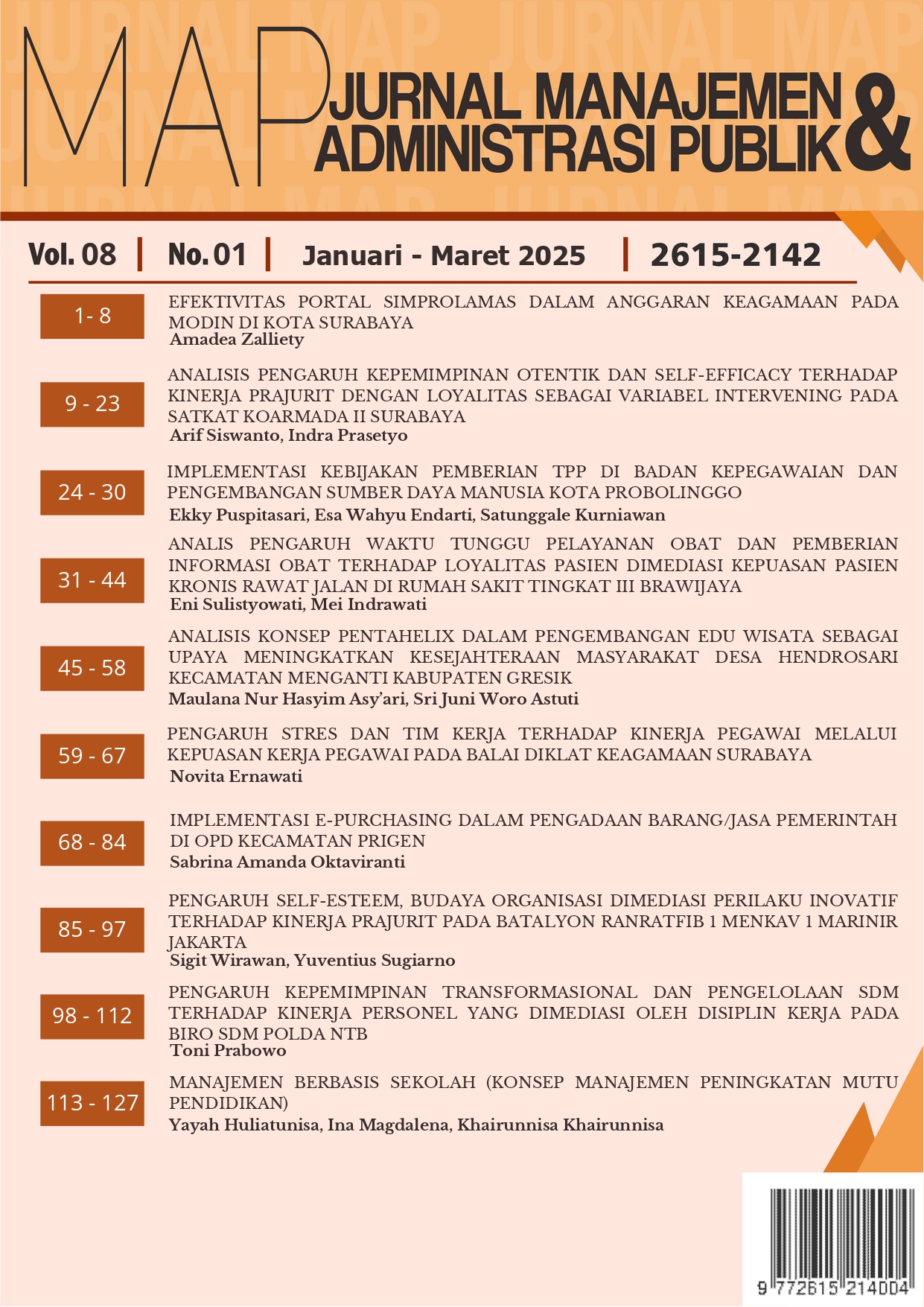ANALIS PENGARUH WAKTU TUNGGU PELAYANAN OBAT DAN PEMBERIAN INFORMASI OBAT TERHADAP LOYALITAS PASIEN DIMEDIASI KEPUASAN PASIEN KRONIS RAWAT JALAN DI RUMAH SAKIT TINGKAT III BRAWIJAYA
Abstract
Hospitals are responsible for providing optimal healthcare services to enhance service quality and meet patient needs. This study aims to analyze the influence of drug service waiting time and drug information provision on patient loyalty, with patient satisfaction as a mediating variable. The study was conducted on chronic outpatients at Rumah Sakit Tingkat III Brawijaya using a quantitative method with a Structural Equation Modeling-Partial Least Squares (SEM-PLS) approach. The research sample consisted of 138 patients selected using the quota sampling method. The results indicate that drug service waiting time and drug information provision have a positive and significant impact on patient satisfaction. Additionally, patient satisfaction significantly influences patient loyalty. Further analysis reveals that drug service waiting time and drug information provision also indirectly affect patient loyalty through patient satisfaction as a mediating variable. These findings highlight that improving efficiency in pharmaceutical services, including reducing waiting times and enhancing drug information quality, can strengthen patient loyalty to the hospital. Therefore, hospital management is advised to optimize drug distribution, enhance the competence of pharmaceutical staff, and improve communication systems with patients to foster better long-term relationships.




